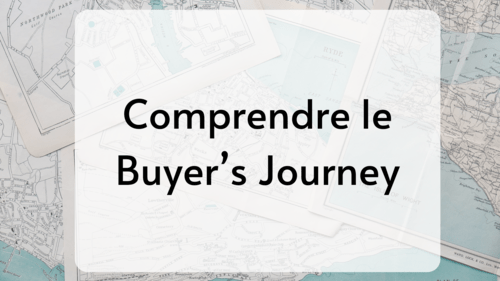Choosing the best e-commerce solution is quite a complicated thing. It's engaging and can have a huge impact on your business.
One mistake can be costly and set you back several years. So how can you be sure to select the right e-commerce solution in your context and make the right choice? Here are 8 fundamental points to check to be sure that your decision is going in the right direction.
What questions to ask choose the right e-commerce platform?
1) Is the platform fast and reliable?
In other words: Will the platform remain operational during busy days? Indeed, there is no point in investing in a platform, hosting and an entire e-commerce ecosystem if the platform cannot hold the load during the most important periods for you.
And when we talk about a platform, we have to think about all the stages: the front office of the site of course, but also the back office, the conversion tunnel, the means of payment, customer reviews and anti-fraud solutions, all the plugins, APIs, notification emails and order registration

It's the entire technical stack that must be able to withstand the shock. Indeed, the strength of a chain is equivalent to that of its weakest link. Can you identify which is the weak link in your current e-commerce chain?
2) What level of security and compliance does your platform guarantee?
Security at all levels is important, especially if you exceed millions of euros in turnover online. On the payment side, Ideally, look for an e-commerce provider with level 1 of the Payment Card Industry Data Security Standard (PCI DSS) and of course 3D secure . If the platform automatically manages security, you are in good hands.
Of course, online and e-commerce security is not just about payments. It is also data hosting, compliance with the GDPR, security breaches and the robustness of the platform against DDOS or other attacks.
In the case of open source e-commerce, it is up to you or your E-commerce agency, see also, how to choose your e-commerce agency , to take charge of this operation, in the case of a solution in SaaS, this is often the responsibility of the platform editor.
3) Does the platform integrate with your technology stack?
The technological stack, or stack tech, is your ERP, your OMS, your TMS or any other IT system necessary for your business to operate.
No need to reinvent the wheel. Normally, the best platforms are technically agnostic. Will the platform work with your current technologies? This is THE question to ask yourself. If you have to recode everything just for a change of e-commerce solution, or even worse, just for a change of front-end, then maybe it's not the right solution.
Afterwards, if your tech stack is a monolith, it is not easy to find suitable solutions. In short, on the modern e-commerce solution side, it is good to favor APIs and headless solutions as much as possible in order to keep as much scalability as possible.
4) How can I personalize my online store?
An E-commerce site is an object that moves, lives and changes regularly. Do you have the hand to develop your site in terms of merchandising and commercial animation or do you have to go through your web agency? Know what is possible when it comes to adapting the platform to your needs. Understand which products are offered by the e-commerce solution to help you in this task.
For example, Shopify 's 2.0 theme system is ideal for managing all parts of its site through sections and blocks that allow great fluidity and live animation by the marketing team without going through the Shopify developer box.

5) How long does the migration process take?
Changing E-commerce CMS takes time. But today, there are solutions to change e-commerce platform in a much less painful way. Mass import modules, synchronization tools, existing multi-platform connectors, agency skills in merchant site migration , etc.
As an indication, an estimate of change of E-commerce platform should not exceed eight to ten months. It can even be between 1 and 3 months for smaller projects.
Ask your e-commerce agency how many such migrations have already taken place with the teams and as always, ask for references to be sure of your choice.
6) What is the support during and after the migration?
Being well supported is essential to be able to make the most of your new platform. It is useful to remember that change management is above all a human and HR act as much as a technical advance. It will therefore be necessary to deploy, regardless of the choice of the market solution, training and support sessions.
What are the possibilities offered by the platform, by the agency and by the e-commerce ecosystem around this platform? If only one agency is present, and the publisher is outside France, it may not matter. Will he have sufficient human resources to support you? To be checked .
If the e-commerce platform has a team in France and many agencies are present in the ecosystem, or even training centers, this will allow competition to play and maximize the success of the E-CMS change. trade within your company.
7) How will the migration impact my SEO rankings?
Natural referencing is an essential link in many marketing strategies. Every marketing agency says it: natural referencing is, in the long term, the most profitable solution for bringing in a lot of traffic at low cost, or at least offsetting the high costs of advertising.
What are the human and technical means implemented by the e-commerce platform and its ecosystem to ensure this SEO migration with the least possible concern and on what horizon can we expect this migration to be “digested” by Google? The correct answer is that it shouldn't be in the long run.
Of course, each platform will boast of being 100% compatible with Google's SEO recommendations. Well there, apart from checking this point with a specialized SEO agency, you should not blindly trust the platforms.
8) What happens when I need to update my site?
When we ask ourselves the question of " which e-commerce platform to choose ", we think of creation but also of maintenance. If you opt for a SaaS solution, the platform will continually update its technology so that you can focus on your business. You shouldn't have to pay extra to your platform or manually install new versions every time an integration is needed.
In the case of an open source platform, it will be necessary to manually install new versions each time an integrator updates its software. It can be long, painful and expensive if you want to do it right.
As for the solution of not updating your platform, it is quite simply heresy from a security and maintenance point of view, you will end up with technical debt and maintenance expenses which fly away and significant legal risks. You might as well take into account the cost of higher maintenance when calculating the cost of ownership of an e-commerce site.
Switch platforms to plan for the future
 Understanding the benefits of a SaaS solution, knowing your business needs, and asking the right questions will help you better assess all the things you need to consider when deciding on a new commerce solution. things to consider when choosing a new commerce solution.
Understanding the benefits of a SaaS solution, knowing your business needs, and asking the right questions will help you better assess all the things you need to consider when deciding on a new commerce solution. things to consider when choosing a new commerce solution.
While migration is a time-consuming process, moving to the right commerce solution means building a stable and flexible foundation for your business.
This foundation will allow you to grow today and in the future, so you can continue to take your business to the next level.







